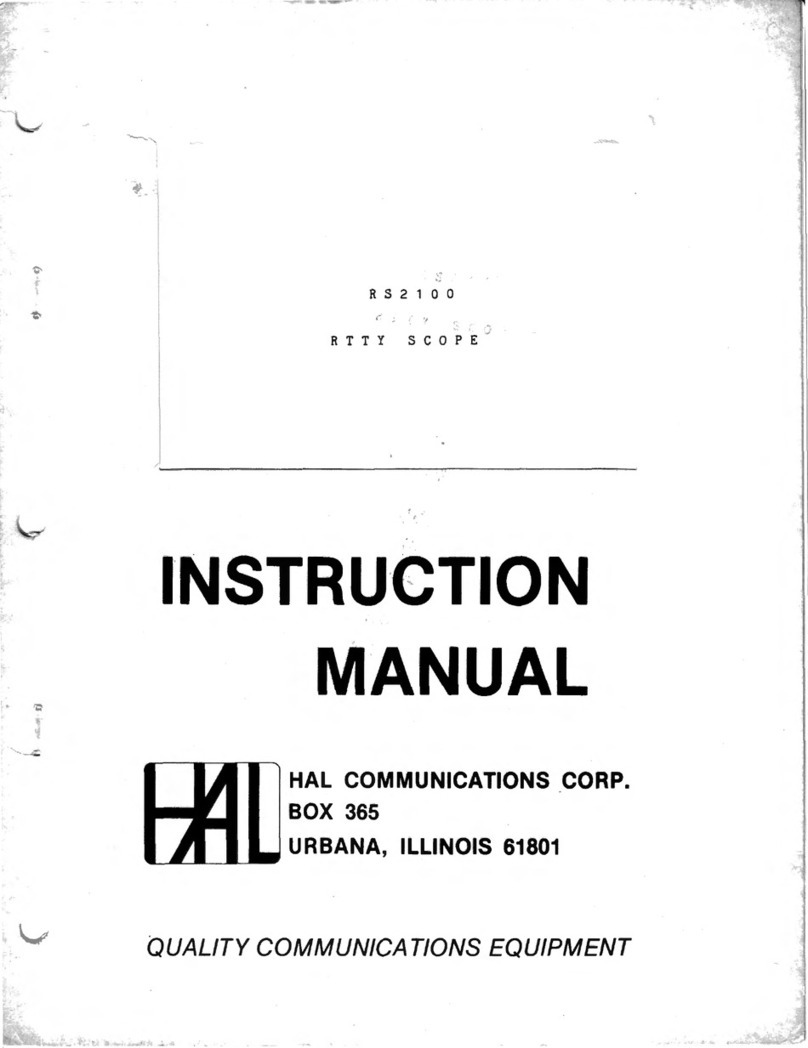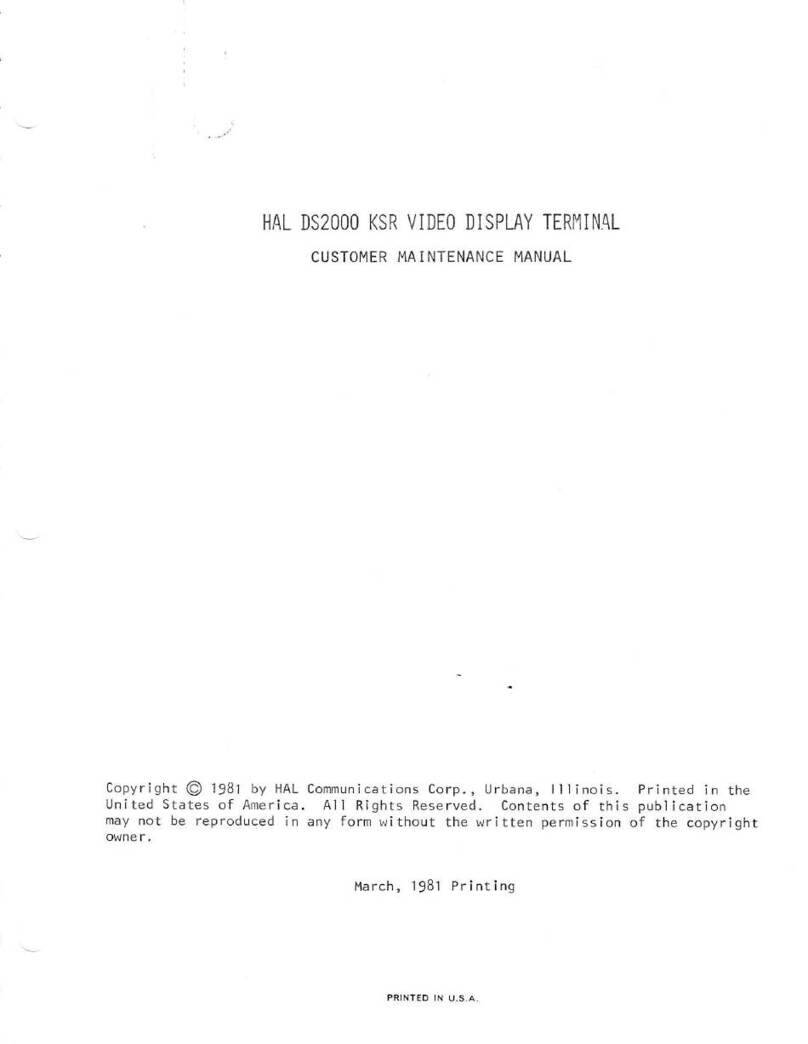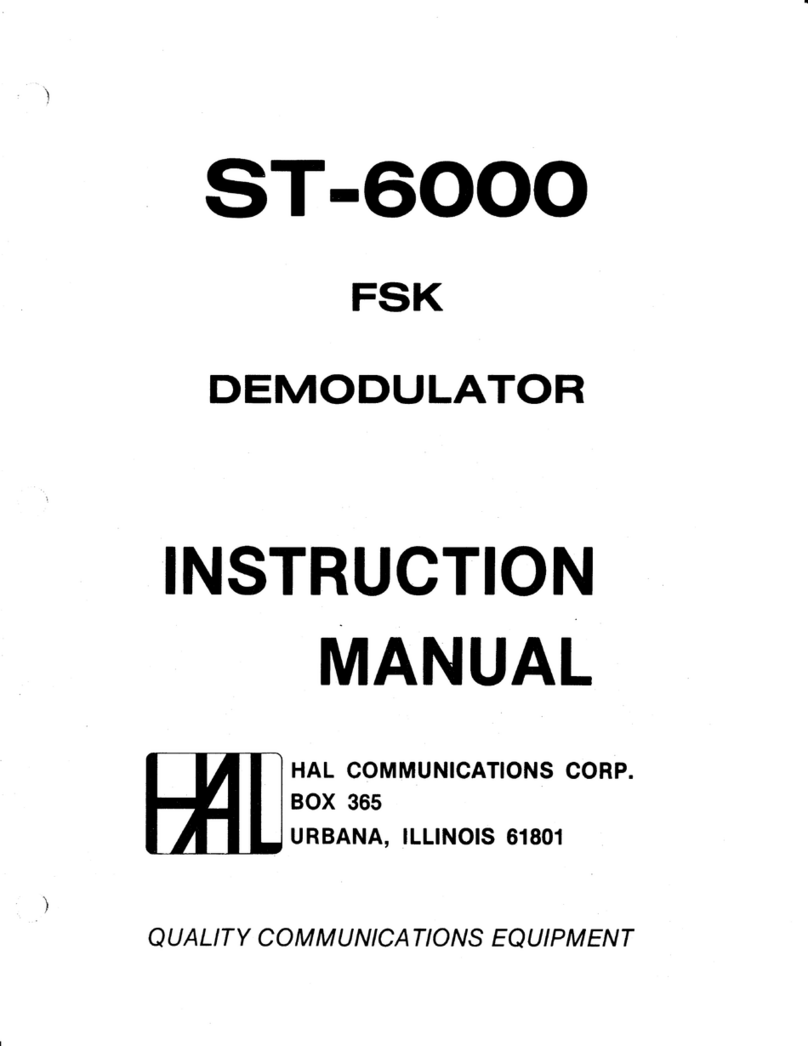
""
.
-""'
,,.,..,
******************"k**"'k****************'"**i'\"-k*
..
k·l\;'\"1co.Jc-k*'"*"k*·k··kk·k-k***-1<*
WARRANTY
HAL
Communications
Corp.
warrants
that
the
HAL
Communications
Corp.
factory-wired
AK-1
AFSK
Oscillator
shall
be
free
of
defects
in
materials
and
workmanship
under
normal
use
and
service
for
a
period
of
one
year.
Should
such
defects
occur
within
the
warranty
period,
notify
HAL
Communications
Corp.
promptly.
The
warranty
period
is
measured
from
the
date
of
the
original
invoice
to
the
postmar~-date
of
your
notification
letter.
Do
not
return
your
unit
to
the
factory
for
repair
or
adjustment
until
you
have
received
written
return
authorization.
In
the
case
of
AK-1
AFSK
Oscillator
Kits,
this
warranty
applies
only
to
the
parts
supplied
in
the
kit
and
does
not
apply
to
any
wiring
or
components
which,
in
the
judgement
of
HAL
Communications
Corp.,
were
damaged
by
incorrect
use
or
construction
on
the
part
of
the
kit
builder.
This
warranty
is
and
shall
be
in
lieu
of
all
other
warranties,
whether
expressed
or
implied,
and
of
all
other
obligations
or
liabilities
on
the
part
of
HAL
Communications
Corp.
resulting
from
the
installation
or
use
of
this
oscillator.
The
foregoing
warranty
is
completely
void
on
all
AK-l's
which
have
been
repaired
by
individuals
other
than
HAL
Communications
Corp.
personnel,
those
which
have
been
damaged,
abused,
modified,
improperly
installed,
or
tampered
with,
and
those
which
have
been
subjected
to
improper
voltages
or
currents.
*****************************************"'<***·k·k*·k-;'\-1<***"k***"k**'-k*-1<*
Copyright©
1974
by
HAL
Communications
Corp.,
Urbana,
Illinois.
Printed
in
the
U.S.A.
All
rights
reserved.
Contents
of
this
publication
may
not
be
reproduced
in
any
form
without
the
written
permission
of
the
copyright
owner.































